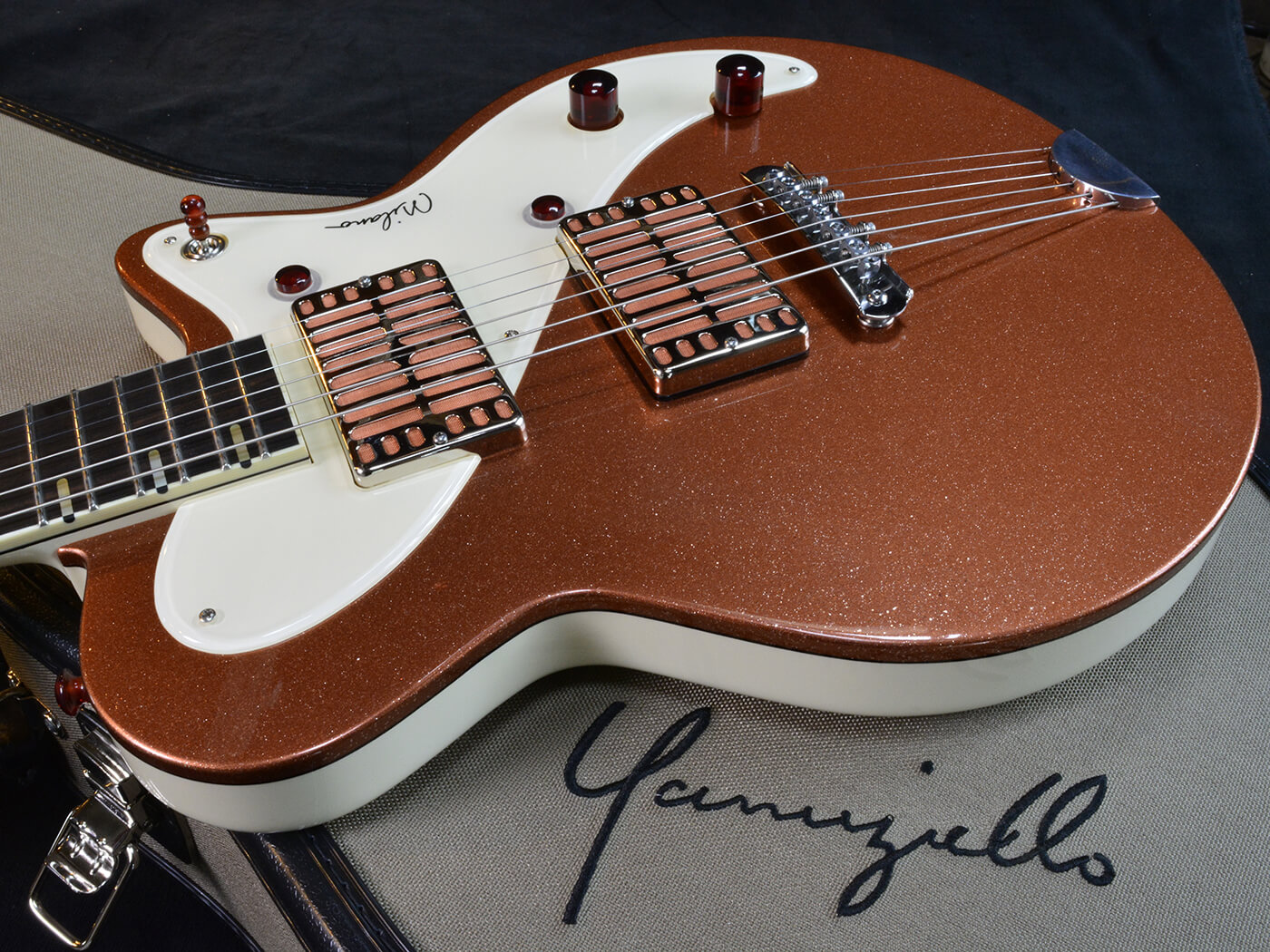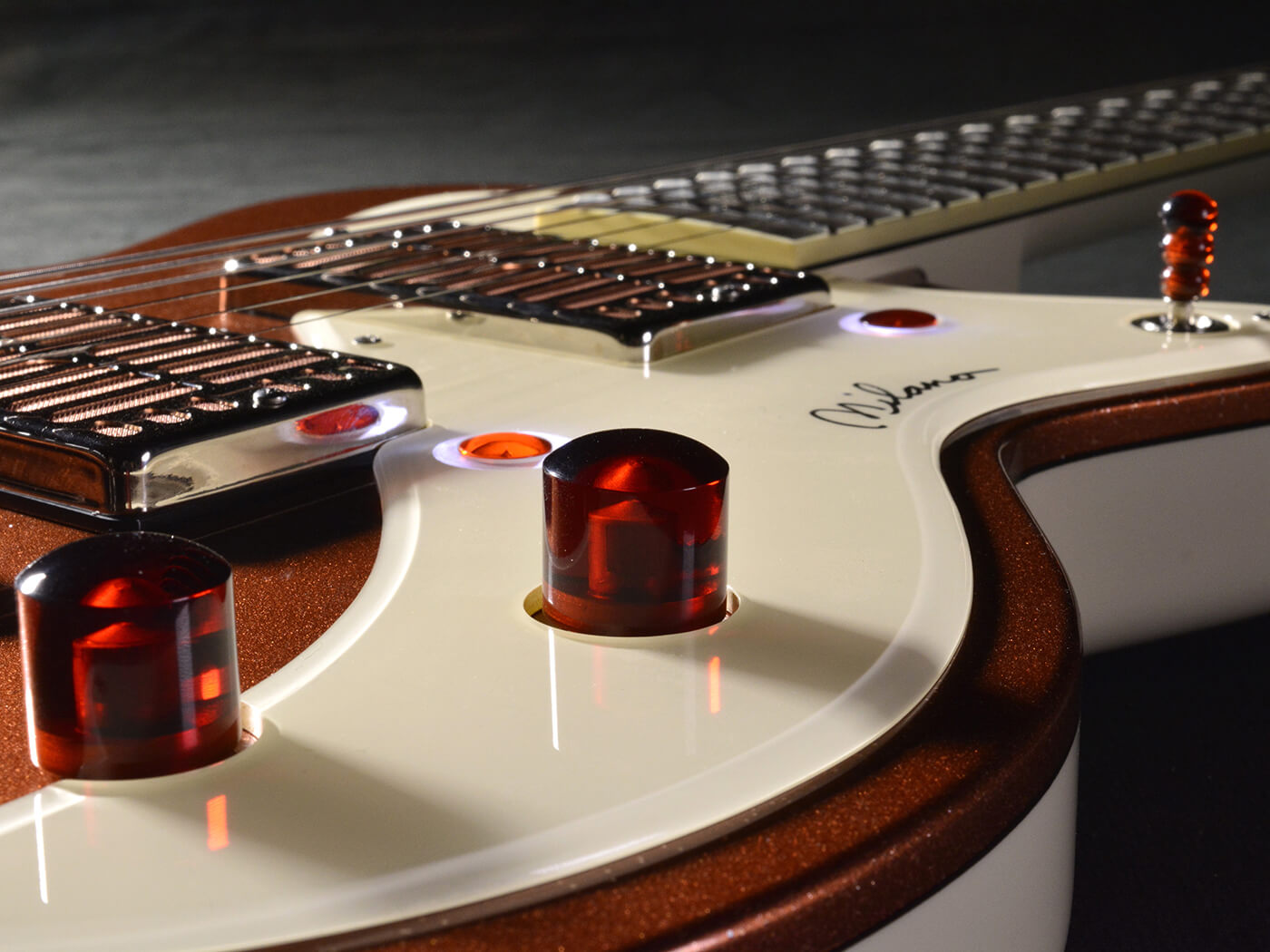Related Tags
Meet Joe Yanuziello, a Canadian guitar-maker whose creations reveal greater depths the closer you look
“Once I’ve built an instrument and turned that idea in my head into a three-dimensional object, the big reward is having a musician use it to express themselves.”
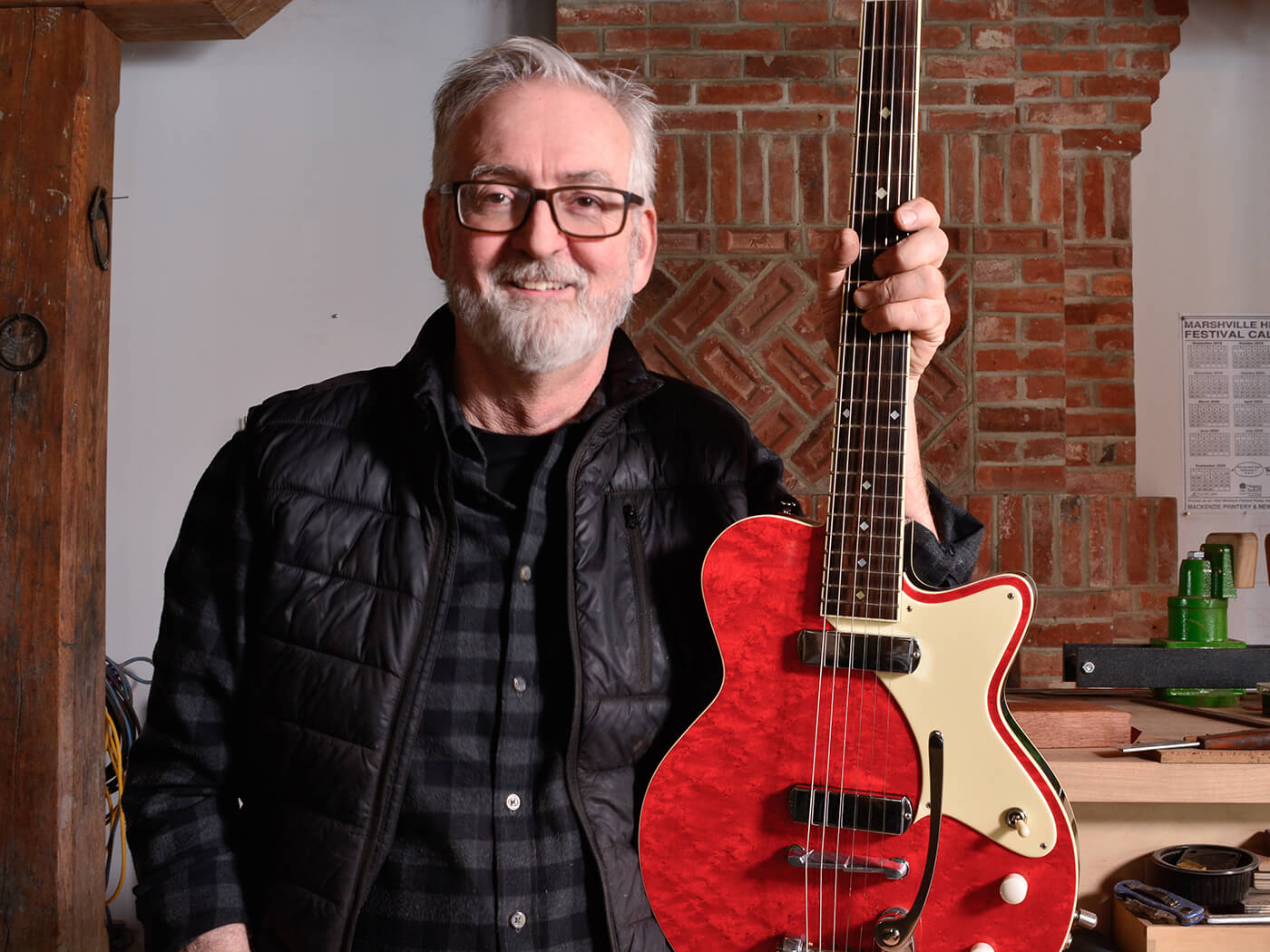
All Images: Yanuziello Stringed Instruments
A first glance at one of Joe Yanuziello’s flagship electric guitars tends to elicit a response along the lines of, “Aw, now isn’t that cute!” His hand-made archtops, flat-tops, mandolins, resos, and acoustic Hawaiian lap steel guitars have long drawn gasps of wonder and awe, but the electrics are bringing him more attention of late.
Probe these more closely and you uncover so much more than the 1950s catalogue-inspired lines and pickups might first imply. The $6,000-plus price tags might give you a clue, but so does the outright quality of the workmanship: the made-in-house hardware and plastics, the bespoke pickups, the chequerboard or tortoiseshell binding – it all combines to declare these guitars as something a little different, and quite special. Yet for Yanuziello himself, it’s still all about the music that will be made with them.
“Once I’ve built an instrument and turned that idea in my head into a three-dimensional object with a life of its own,” he tells us, “the big reward, in my world, is having a musician use it to express themselves. Playing a part in another artist’s expression is fulfilling and very personal, and hopefully the instrument is inspiring for them as well.”
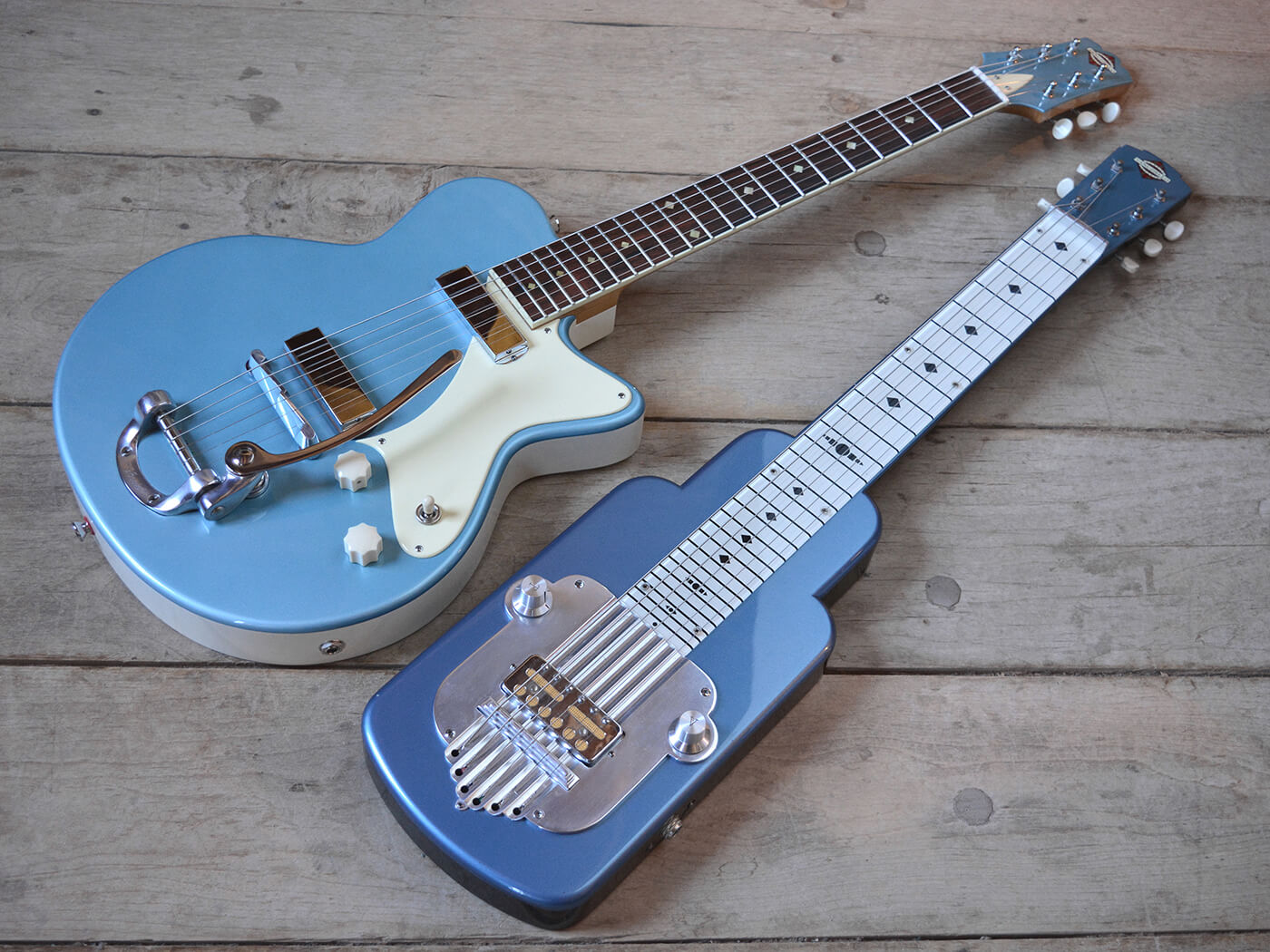
Boy in the ’hood
Joe Yanuziello was born in Toronto in 1952, experiencing the kind of urban North American childhood of the 50s and 60s that seemed richly able to prime a young craftsman for an eclectic career.
“We lived on a street two doors down from my Italian grandmother, my aunt, and my cousins,” he explains. “The street and neighbourhood were primarily comprised of Italian and Jewish families. College Street and Kensington Market were around the corner from my family home, and everyone would be out on the street shopping or hanging out on their porches in the good weather. My father had a sheet-metal shop in a laneway close by. I remember riding my tricycle up the street to his shop and hanging out while he worked.
“He was a very capable guy, and a woodworker as well – I can still smell the shavings curl out of his hand plane in the basement. In the mid 60s we moved north of Toronto to a rural area. My father built us a home on about five acres of land. After that was done, he was contracted to build a handful of custom homes in the area and I worked summers with him. Aside from learning how to use hand tools, what I retained from that experience was to have the confidence to try things out and trust my ability.”
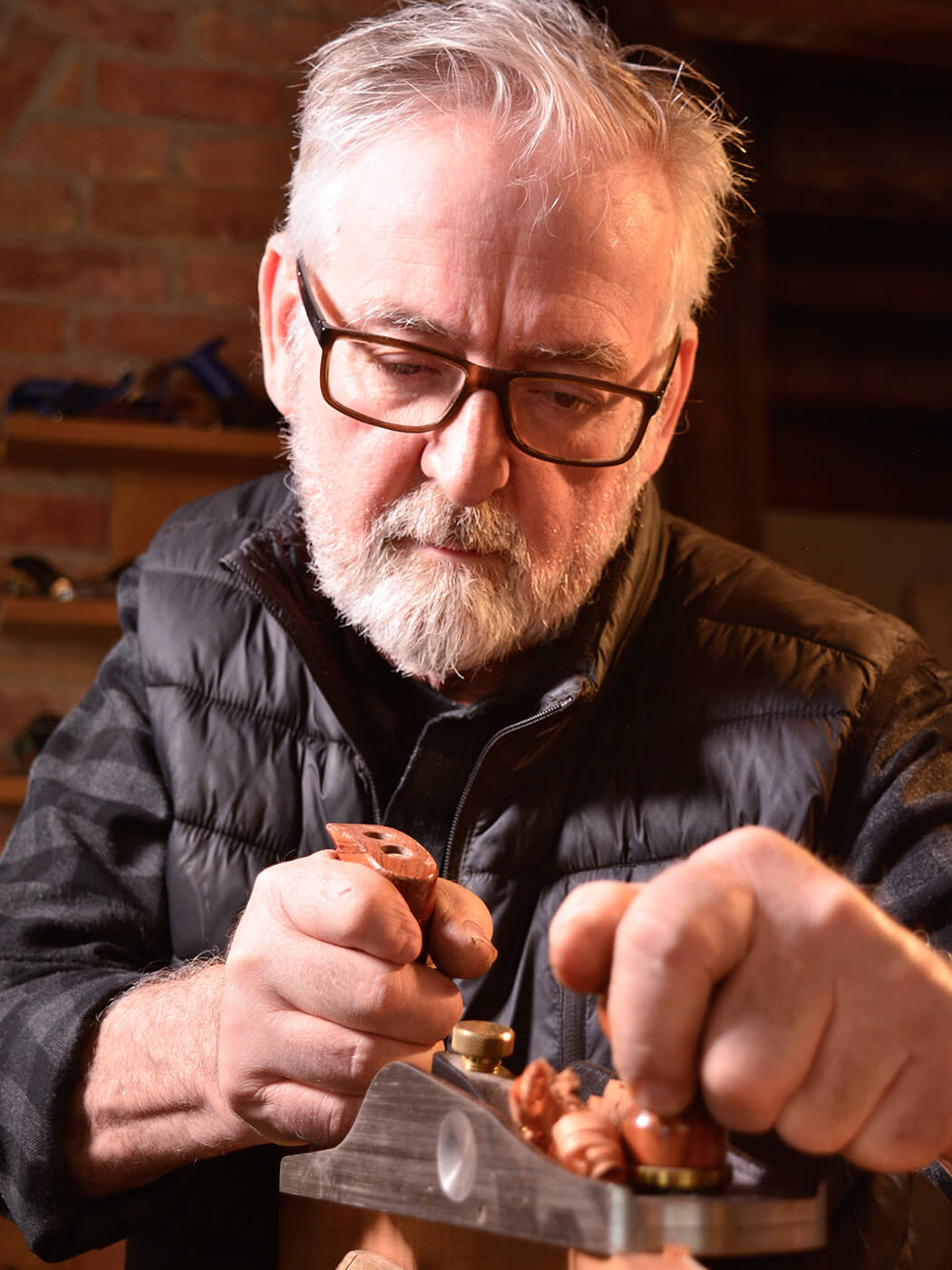
Catching the Ry
Meanwhile, a lively Toronto music scene had inspired a love of the guitar in our budding luthier, just as the skills to create the things himself were coming together organically.
“I was lucky enough to see Jimi Hendrix in Toronto,” he recalls, “just after the first album was released here. I also got to see Howlin’ Wolf, Bukka White, Rory Gallagher, Blind Faith, Asleep At The Wheel, David Lindley and El Rayo X, Lenny Breau, you name it… as well as all of the great local bands and singer-songwriters of that era in Toronto.
“In 1968 I was 16, too young to get into clubs, but my friends and I frequented coffeehouses downtown. One place, the Riverboat, had the best music, and it was there that I first encountered Ry Cooder live. I saw him three nights in a row, just him, his Martin flat-top, and his Gibson mandolin. It was a life-altering event for me. It still is – I’ve seen him every time he’s come to Toronto.”

Yanuziello’s experiences in the coffeehouses and concert venues inspired him to start playing the guitar himself, laying a foundation for a more intimate appreciation of the instrument. In other ways, though, the teen years were tough for a kid who, like so many other budding artists, didn’t quite fit the mould.
Simply put, he says “high school was an abysmal time for me.” He dropped out and travelled to Europe with two other friends, an eye-opening cultural experience that turned things around. Back home in Canada, he was accepted to art college, after which he landed his first woodworking job – a gig covering particle board boxes with Formica and plastic laminates. As unglamorous as it was, the work gave him a lot of practising in routing, trimming and filing this difficult material, “skills I use to this day making the metal and plastic hardware for my instruments,” he tells us.
It was also during his downtime in that position that Yanuziello started building his first guitar, a flat-top acoustic that would eventually be joined by an archtop, then a host of others as he honed skills gathered, in that pre-internet age, at the elbows of local luthiers and from the pages of tomes such as Irving Sloane’s book Steel String Guitar Construction.
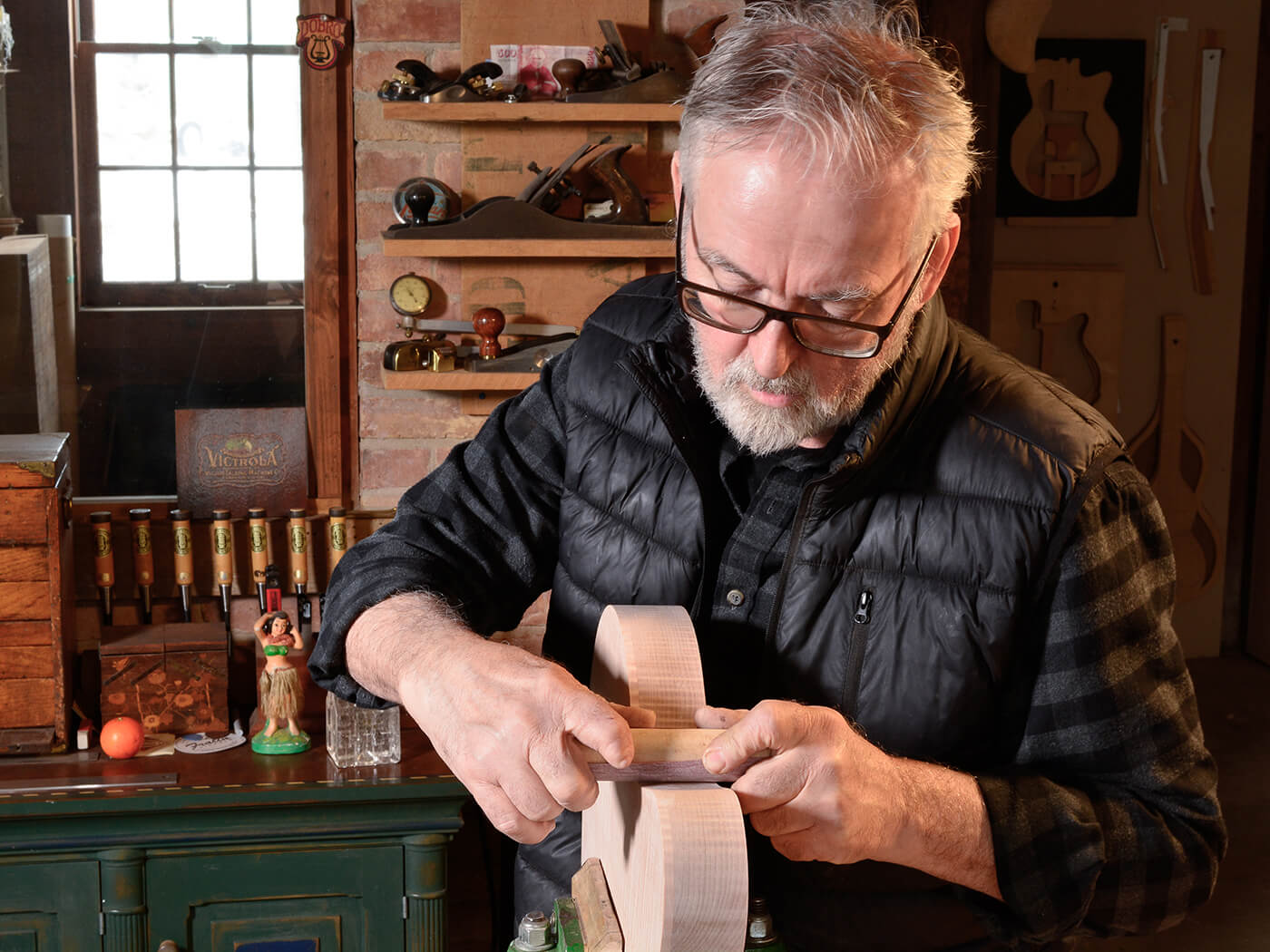
Formica to furniture
There’s some convergence in the decisions that both guitar players and guitar makers are likely to face when life threatens to get real: keep doing whatever it is you do that actually promises to make a living, or abandon all hope of stability and just play the guitar… or make the things.
Putting his experience in house-building together with his art degree, Yanuziello soon graduated from laminating chipboard boxes to more creative work in a high-quality custom cabinetry shop, undertaking fine architectural millwork and other tasks at the more refined end of the woodworking spectrum. He opened his own shop in this field in 1984, but the virus from that bug that had bitten years ago was slowly taking hold. Yanuziello completed guitar after guitar on the side, and some 20 years after the initial infection he just couldn’t fight it any longer.
“I gave up my furniture business to build guitars full time around 1999,” he says. “All things considered, and even though I built my first guitar in 1979, I was a late bloomer as a full-time instrument maker.”
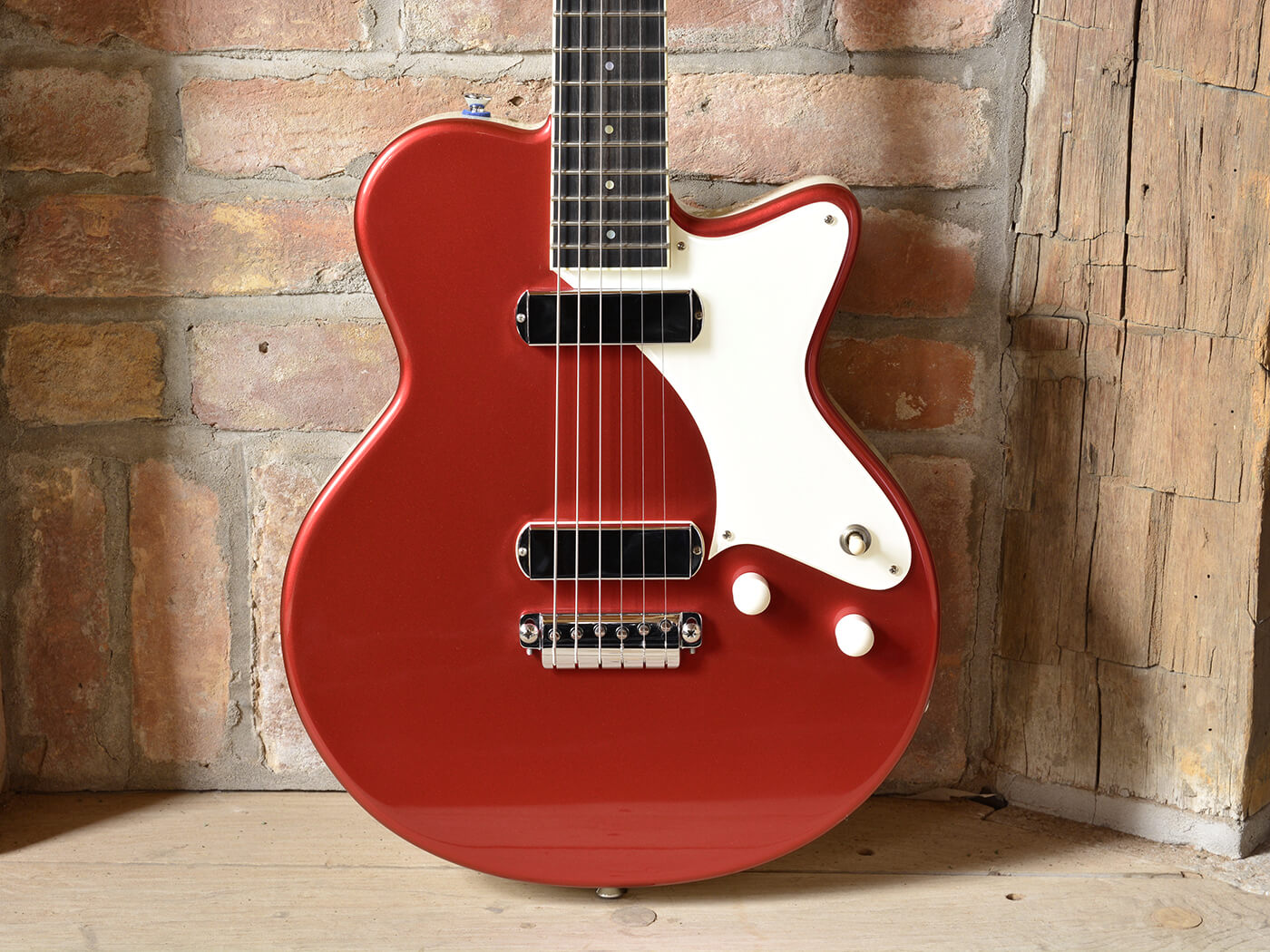
Even a cursory glance at Yanuziello’s distinctive work is likely to reveal some guesses at his early influences, but his instruments come together in ways that bely any easy categorisation. Like many builders, his output is somewhat a product of what turned him on about other instruments in the first place, but the heights to which he’s taken these inspirations reveal deeper forces at play.
Back in 1970s Toronto, about the time he was getting into fingerstyle guitar himself, Yanuziello recalls, “there was a fantastic vintage guitar shop downtown called the Millwheel, with these beautiful old pearl Martins, Gibsons and Washburns. One part of the store was devoted to hand-built acoustics, mostly from local builders. There on the wall you’d see a few Laskins and Wrens, as well as Oskar Graf guitars and others. I was astonished at how Oskar bent his cutaways to the graceful shape of the heel. It was magic for me. And Grit [Laskin] was doing beautiful inlays even back then.”
An examination of Yanuziello’s archtop and flat-top acoustics reveals his deep admiration for pre-war styling and craftsmanship, which is ultimately expressed in a range of instruments that could almost hail from that era themselves if not for the new-guitar shine. His electrics have garnered more attention beyond the Canadian borders, though, in recent years in particular, and it��’s these creations by which players in the UK, Europe or the United States are likely to know him today.

Electric avenue
As he started playing more electric guitar himself in the early 80s, Yanuziello mainly turned to a 1967 Fender Telecaster Custom and a 50s Harmony/Silvertone Stratotone, the collectible Model 1421 variant with ‘Hershey bar’ pickups that had been the staple of several notable blues guitarists. Put the two together, and you’re kinda’ on the road to the man’s own electrics.
“I designed my electric guitar in 1982,” he remembers. “Back then, the ones that I made had typical solid bodies and stock hardware and pickups. Since 1995, though, all of my electrics have been hollow bodies. I was taking cues from my late-50s Harmony/Silvertone. That guitar was super-light and the Hershey bar pickups they were using at the time sounded fantastic. The tone was lively, and the notes seemed to jump out at you.
“But the issue with that guitar and many catalogue-style guitars of that time was the playability. The neck was narrow with hardly any taper, the fretboards were often cheaper woods dyed black to look like ebony, and the finishes were just enough to make them look like more expensive instruments. So, it wasn’t a tall order to improve on those guitars and still keep the tone vibe that made them great, and different from what Fender and Gibson were doing.”

In addition to the inherent sonic results of his construction approach, one of the things most players notice upon first hoisting a guitar made by Joe Yanuziello is that these things are light.
“With the electrics, the bodies are always hollowed-out billets of a hardwood like mahogany, or alder, or soft maple,” he reveals. “This hollowed out concept is also applied to my electric mandolin family: mandolin, mandola, mandocello, and octave mandolin. When the bodies are routed out, I leave 1/4-inch of material on the back and glue on a top cap of the same thickness. The electric mandolin body shape is a scaled-down version of my electric guitar with the mandola size in the middle. I like the fact that they all share that body shape, and the peghead is the same for all of them, just scaled down.”

Hardware homebrew
Also in 1992, Yanuziello designed the metal combo bridge that he manufactures himself, and which appears on many of his guitars, as well as the pickup covers. With his new approach to construction, and the addition of these and other in-house components, his guitars became truly custom, and unique.
“I mostly use brass and sometimes aluminum to fabricate these parts,” he says. “Non-ferrous metals are easy to work with; they cut, shape and polish beautifully, and I don’t need machine shop equipment to make them. Since those early days of making basic hardware, I now have many bridge designs, wood and metal versions, as well as tailpiece designs that I can make here in my shop.

“For the last few years, I’ve also been making my own control knobs and switch tips out of thermal setting plastic that I machine from blocks that I cast, or that I’ve machined from other vintage plastics that I find.”
Yanuziello adds: “Designing an original non-derivative guitar is a curse and a blessing. The good part is you’ve got something different that represents you and your ideas, and if you can turn that into a brand that people accept, then you’re on your way to having your cake. The downside of having an original design is that it does take energy, being visible, and patience to convince the buying public that this thing they don’t recognize, that you’re trying to sell them, will actually work as well as the Chevs and Fords that they accept unconditionally.”
Going for gold
Early on in his electric-guitar making Yanuziello sought out original vintage DeArmond ‘S-top’ gold foil pickups to mount on his own builds. Inevitably, these eventually dried up, and a source for new renditions was needed.
“My friends stopped answering my calls for old pickups,” he recalls, “and finally I discovered Fralin pickups. I called Lindy, and fortunately for me he agreed to wind me a close version of a Hershey bar pickup. He had a fondness for those pickups as well. It worked out nicely; he wound the pickups, and I made the metal covers. Twenty-five years later we’re still doing it the same way. He’s also made humbucking versions for me on occasion. Lately, I’ve been offering his mini-humbuckers if someone wants a humbucking tone.”
For other options still, Yanuziello will sometimes turn to Lollar Gold Foils, and has recently used Mojo Dual Foils on his Milano Series guitars, which are essentially two gold foils side-by-side under one metal grille to form a single humbucker.
The Milano is a limited edition of sorts that follows on from a guitar that Yanuziello first made for long-time customer Kevin Breit, who has played with Cassandra Wilson, Jane Silberry, Rosanne Cash, KD Lang, Nora Jones, and recently named his new solo album, Stella Bella Strada, after the name he and the guitar-maker gave this signature model.
A real looker – “it was my interpretation of a 60s Euro/Italian electric” – it’s another model in a long line of guitars that draw sincere admiration for their style and grace. For a real cutie pie, though, check out another model suggested by Breit, a diminutive candy-coloured confection dubbed the Cupcake. “It’s the size of a bakelite Rickenbacker,” says Yanuziello, “and fits in the overhead compartment of an airplane. He was touring with Cassandra Wilson then, and needed something he could take along.”
Among other artists, Yanuziello has also built acoustic resonator guitars, traditional hollow-neck acoustic lap steels, and electric lap steels for Don Rooke (The Henrys, Cowboy Junkies, Mary Margaret O’Hara), and electric guitars for Bill Frisell and Toronto-based jazz artist Rob Piltch, and each has been different in its final style and appointments. To some extent, though, Yanuziello shakes off any efforts to foist accusations of ‘uniqueness’ upon his work.

“I offer the same hardware, pickups, bridges on all the instruments,” he says. “I hand-make all the parts specifically for each instrument, so there’s this continuity across the spectrum that appeals to me, and within that there are many options for colour, type of trim, wood, plastic binding and pickguards.
“The design aspect of my instruments is very important to me. I like to think that all the details and individual components on my instruments have a life of their own. You could take any one of them out of context – the control knobs, the pickguards, the bridges and tailpieces – and they would look complete on their own, much like an Alexander Calder mobile sculpture; no matter what angle your perspective, the shapes and lines look right. One thing that I appreciate about a good design is you don’t have to understand why it works – it just works. There’s no training involved; the designer has done that for you.”
Visit yanuziello.com for more.

